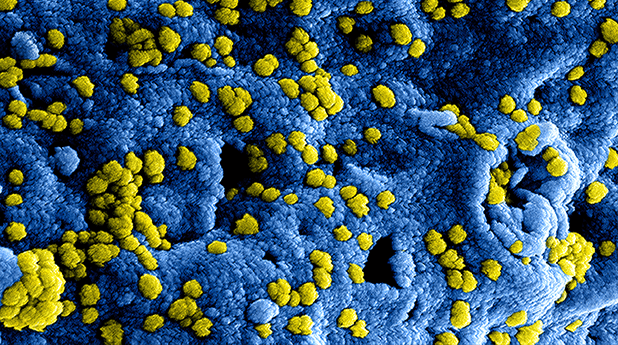Western Europe’s 2nd wave is more like a ripple
While Western Europe’s 2nd wave is garnering worldwide attention, what is being virtually unacknowledged, is that the number of COVID-19 deaths across the region remain far below prior levels. This suggests that case numbers earlier on in the outbreak were massively undercounted. In order to gain further insight into how large the undercounting may have been, we have conducted an extrapolation based upon the number of deaths recorded. While subject to infection fatality rate (IFR) assumptions, which could be above or below our input, this extrapolation should provide a more accurate picture of case numbers.
Our estimate suggests Western European cases may have been running at over 500,000 per day at their peak, versus the ~30,000 peak recorded. Rather than being a wave, this suggests that Western Europe’s current outbreak appears to be little more than a ripple.

Deaths continue sharp decline, moving in-line with seasonal flu
As seen in the above charts, deaths continue to sharply decline across Western Europe. This has seen case fatality rates (CFRs) move sharply lower across Western Europe, with a median of 0.58% recorded on 29 August. Given that cases are undercounted, the real IFR is likely to be significantly lower than this number. Some nations, including Sweden (CFR of 0.14%), are now recording CFRs not dissimilar to the seasonal flu. The extremely alarming predictions that suggested IFRs could be in whole single digit percentages, and which were used to justify lockdowns, have now been discredited by an objective analysis of the data.
Much of Western Europe and the USA have likely hit HITs
The sharp decline in cases, case positivity, deaths and/or hospitalisations across Western Europe and the USA, suggests that much of these areas have hit their herd immunity thresholds (HITs), or will soon do so. This comes despite conventional wisdom suggesting that reaching herd immunity requires 60-70% (or more) of the population to become infected. Though these assumptions are based on vaccination theory and not natural herd immunity. Studies instead suggest that a 10-20% infection rate may result in HITs being reached for COVID-19. This is supported by studies which show widespread pre-existing T cell immune responses to COVID-19, in up to 80% of individuals.
Life will likely soon return to normal in these areas
This suggests that Western Europe and the USA will likely be largely back to normal by year’s end, with herd immunity broadly obtained. This would be a major positive catalyst to livelihoods around the globe, helping to restore economic growth and reduce the death, destruction, and depression associated with social isolation, increased poverty and unemployment.
